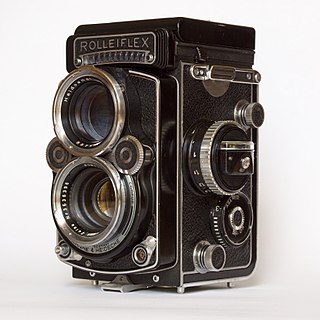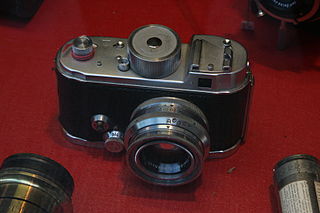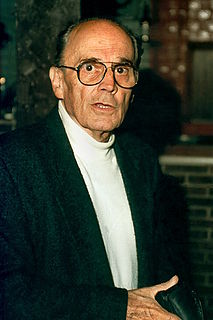35mm cameras


- Edixa Reflex, with Steinheil Quinon 1.9/55mm, Isco Travegar 2.8/50mm
- Edixa-MAT REFLEX
- Edixa REX TTL
- Universal edixamat cd
- Edixa Stereo
- Edixa Electronica
- Edixa motoric
Edixa is a brand of camera manufacturer Wirgin Kamerawerk which was based in Wiesbaden, West Germany. The product line included several 35mm cameras and 16mm Edixa 16 subminiature cameras designed by Heinz Waaske from the 1950s to the 1970s.



| subminiature camera | weight | dimension | lens | aperture | shutter | |
|---|---|---|---|---|---|---|
| 1 | Edixa 16 | 200g | 108x41x33mm | 25mm f/2.8 TRAGEVAR | 2.8 - 16 | 1/30 - 1/150 |
| 2 | Edixa 16M | 200g | 108x41x33mm | 25mm f/2.8 SCHNEIDER XENAR | 2.8 - 16 | 1/30 - 1/150 |
| 3 | Edixa 16MB | 200g | 108x41x33mm | 25mm f/2.8 SCHNEIDER XENAR | 2.8 - 16 | 1/30 - 1/150 |
| 4 | Edixa 16U | 200g | 108x41x33mm | 25mm f/2.8 SCHNEIDER XENAR | 2.8 - 16 | 1/30 - 1/150 |
| 5 | Franka 16 | 200g | 108x41x33mm | 25mm f/2.8 TRAGEVAR | 2.8 - 16 | 1/30 - 1/150 |
| 5 | alka 16 | 200g | 108x41x33mm | 25mm f/2.8 RODENSTOCK TRINAR | 2.8 - 16 | 1/30 - 1/150 |




Edixa 16mm uses Rollei 16 type RADA cartridge, loaded with unperforated 16mm film, film width 16mm, frame format 14x21mm, 20 exposures per cartridge.

A twin-lens reflex camera (TLR) is a type of camera with two objective lenses of the same focal length. One of the lenses is the photographic objective or "taking lens", while the other is used for the viewfinder system, which is usually viewed from above at waist level.
Robot is a German imaging company known originally for clockwork cameras, later producing surveillance (Traffipax) and bank security cameras. Originally created in 1934 as a brand of Otto Berning, it became part of the Jenoptik group of optical companies in 1999. In 2002 the company changed its name from Robot Foto & Electronic to ROBOT Visual Systems GmbH.

Zorki is the name of a series of 35mm rangefinder cameras manufactured in the Soviet Union between 1948 and 1978.

Rollei was a German manufacturer of optical instruments founded in 1920 by Paul Franke and Reinhold Heidecke in Braunschweig, Lower Saxony, and maker of the Rolleiflex and Rolleicord series of cameras. Later products included specialty and nostalgic type films for the photo hobbyist market.

Rolleiflex is the name of a long-running and diverse line of high-end cameras originally made by the German company Franke & Heidecke, and later Rollei-Werke.

Contax began as a camera model in the Zeiss Ikon line in 1932, and later became a brand name. The early cameras were among the finest in the world, typically featuring high quality Zeiss interchangeable lenses. The final products under the Contax name were a line of 35 mm, medium format, and digital cameras engineered and manufactured by Japanese multinational Kyocera, and featuring modern Zeiss optics. In 2005, Kyocera announced that it would no longer produce Contax cameras. The rights to the brand are currently part of Carl Zeiss AG, but no Contax cameras are currently in production, and the brand is considered dormant.

Schneider Kreuznach is the abbreviated name of the company Jos. Schneider Optische Werke GmbH, which is sometimes also simply referred to as Schneider. They are a manufacturer of industrial and photographic optics. The company was founded on 18 January 1913 by Joseph Schneider as Optische Anstalt Jos. Schneider & Co. at Bad Kreuznach in Germany. The company changed its name to Jos. Schneider & Co., Optische Werke, Kreuznach in 1922, and to the current Jos. Schneider Optische Werke GmbH in 1998.

The history of the single-lens reflex camera (SLR) begins with the use of a reflex mirror in a camera obscura described in 1676, but it took a long time for the design to succeed for photographic cameras: the first patent was granted in 1861, and the first cameras were produced in 1884 but while elegantly simple in concept, they were very complex in practice. One by one these complexities were overcome as optical and mechanical technology advanced, and in the 1960s the SLR camera became the preferred design for many high-end camera formats.

Retina was the brand-name of a long-running series of German-built Kodak 35mm cameras, produced from 1934 until 1969. Kodak Retina cameras were manufactured in Stuttgart-Wangen by the Kodak AG Dr. Nagel Werk which Kodak had acquired in December 1931.

The Rollei 35 is a 35mm miniature viewfinder camera built by Rollei. The original Rollei 35, when introduced at photokina in 1966, was the smallest existing 135 film camera. The Rollei 35 series remains one of the smallest 35 mm cameras after the Minolta TC-1 and Minox 35. In 30 years, about 2 million Rollei 35 series cameras were manufactured. The Rollei 35 was manufactured by DHW Fototechnik up to 2015, the successor of Franke & Heidecke as small-batch production. The last version is the Rollei 35 Classic, an updated Rollei 35 SE.

The Mamiya C330 Professional is a traditional film twin-lens reflex camera introduced in the 1970s for the professional and advanced amateur photography markets. This model was 340 grams lighter than the previous model C33, which weighed 2040 grams. The later C330f is an improvement on the C330 and was succeeded by the C330S with further improvements.

The Beaulieu 5008 S is a Super 8 mm film dual-speed professional camera. This camera was released by the Beaulieu (company). It was first launched in February 1974. The primary component that set this camera apart from other Super 8mm cameras of the era was that it was made with a unique SLR function and interchangeable Schneider Kreuznach and Angenieux zoom lens.

The Robot II was a mechanical 135 film camera by Robot introduced in 1938.

The Contaflex series is a family of 35mm leaf-shuttered SLR cameras, produced by Zeiss Ikon in the 1950s and 1960s. The name was first used in 1935 on a 35mm Twin-lens reflex camera, the Contaflex TLR also by Zeiss Ikon, the -flex part in the name referring to integral mirror for the viewfinder. The first models, the Contaflex I and II have fixed lenses, while the later models have interchangeable lenses, and eventually the Contaflexes became a camera system with a wide variety of accessories.

Heinz Waaske was a German camera designer, notably father of the Rollei 35.

Wirgin was a German company which is still known for its brands Wirgin and Edixa, and for its camera types like the Edina, the Edinex or the Gewirette. It was based in the Hessian capital Wiesbaden and made a line of quite inexpensive 35mm SLRs from the 1950s to the 1970s, including the Edixa Reflex and Edixa-Mat Reflex. Wirgin was West Germany's main producer of SLRs with focal plane shutter. It also produced some of the lenses for its cameras, among them several M42 screw mount lenses.

The Kodak Retina Reflex is a discontinued series of four single-lens reflex cameras made by Kodak, continuing the brand Kodak Retina.

A selenium meter is a light-measuring instrument based on the photoelectric properties of selenium. The most common use of such light meters is measuring the exposure value for photography. The electric part of such a meter is an electromagnetic measuring instrument which is connected to the anode and cathode of a selenium photo cell that produces more or less electric power when exposed to more or less light. The optical part of such a meter is a window in front of the photo cell's light-sensitive side. The window's surface is usually structured like a honeycomb made of convex lenses. This type of window helps to bundle the light coming from the direction in which the photo cell is pointed. The mechanical part of a selenium meter is an analog calculator which accepts exposure value and film speed as input parameters for showing the possible aperture and shutter-speed combinations for correct exposure.

The Kine Exakta was the first 35mm single-lens reflex (SLR) still camera in regular production. It was presented by Ihagee Kamerawerk Steenbergen GmbH, Dresden at the Leipziger Frühjahrsmesse in March 1936. The Exakta name was already used by Ihagee on a roll film SLR camera line since 1933, among these the Vest Pocket Exakta Model B from which the Kine Exakta inherited its general layout and appearance. The word Kine never appeared on the camera itself, only in the instruction manuals and advertising to distinguish it from the roll film variants. Several of its features constitute the foundation for the majority of 35mm SLR cameras produced ever since, although at this stage in an infant state.

Kamera-Werkstätten Guthe & Thorsch (K.W.) was established 1919 in Dresden by Paul Guthe and Benno Thorsch, starting out manufacturing the Patent Etui plate camera. Ten years later came the roll film TLR Pilot Reflex and in 1936, the 6×6 SLR Pilot range. By that time, Benno Thorsch, the surviving partner from 1919, decided to immigrate to the United States and arranged with the US citizen Charles Noble to swap enterprises. Noble came to Germany and moved the factory to Niedersedlitz on the outskirts of Dresden, while Benno Thorsch in Detroit ran the acquired photo finishing business that was one of the largest in the USA. The new Kamera-Werkstätten AG, Niedersedlitz prospered, and in 1939 launched the 35mm SLR Praktiflex camera. The concept proved successful, and through continuous development, the Praktica name became one of the most popular 35mm SLR brands for several decades, beginning in the 1950s.